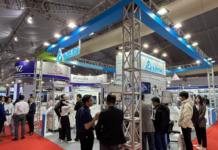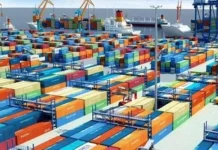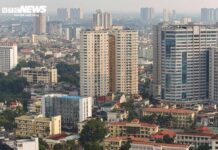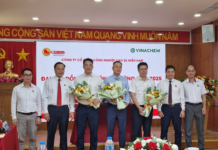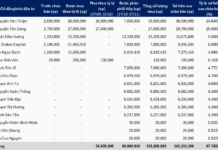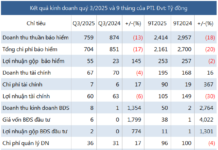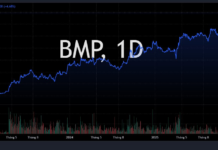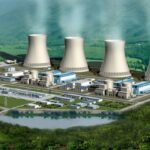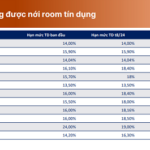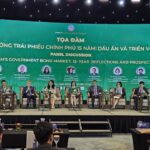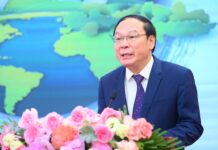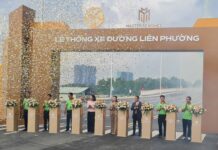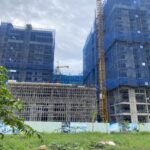Ms. Nguyen Phuong Mai, an energy project consultant, shared her insights at the “Energy Technology in the New Era” forum held on July 31.
With 20 years of experience at the Ministry of Industry and Trade, over 10 of which were spent at the Department of Electricity and Renewable Energy (now the Electricity and Renewable Energy Management), Ms. Mai is now an independent expert who frequently supports international financial organizations and businesses in their ventures into the Vietnamese market.
According to World Bank estimates, Vietnam needs approximately $368 billion by 2040 to achieve its emission reduction goals, with the private sector contributing around $180 billion. From her consulting experience and work with numerous investors, Ms. Mai believes that capital mobilization for this process still faces three major obstacles: policy, management capacity, and the macroeconomic environment.
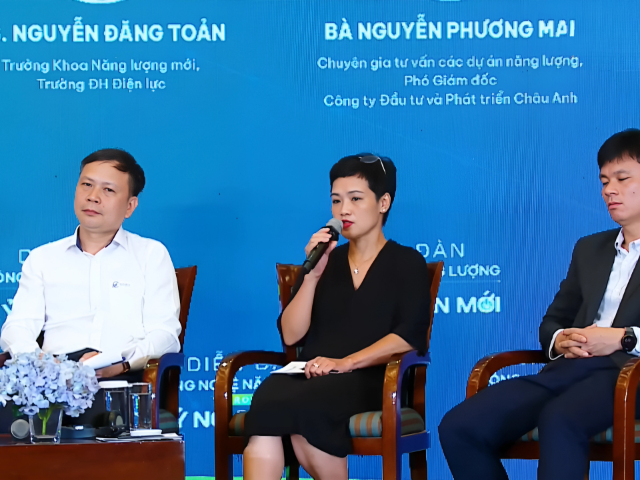
Ms. Nguyen Phuong Mai sharing her insights at the forum on July 31 – Screenshot
|
The first issue, according to the expert, lies in implementation. Vietnam has issued comprehensive plans, mechanisms, and laws, but the execution capacity remains weak. She commented, “We have everything in place, from orientations to mechanisms. However, our implementation capacity is still limited.”
Secondly, regarding the capabilities of government agencies, especially at the provincial level, where renewable energy projects play a crucial role. As the bidding process is decentralized to the local level, officials are not only expected to evaluate investors but also to understand the technology landscape and project lifecycles thoroughly. However, this team is still adapting and falls short of the required expertise and language skills, which are essential for engaging with foreign investors.
“During the Power Development Plan VII period, most decisions were centralized at the central level, with local authorities mainly coordinating and implementing projects,” she said. “But in this new phase, with the management and operational powers delegated to the local level, I believe that the local agencies have not been able to develop their human resources and personnel capabilities fast enough to assume this new role.”
Ms. Mai illustrated this point by mentioning that even basic English communication, which is often a requirement for civil service entrance exams, remains a hurdle. Meanwhile, the increasing technical demands highlight the gap between the new roles and the current capabilities of local authorities. This inconsistency turns decentralization into an impediment rather than an enabler.
The final challenge highlighted by the expert is the macroeconomic environment. Despite Vietnam’s rapid growth, investors remain cautious due to concerns about exchange rate fluctuations and inflation. “Exchange rate risk is something they cannot control,” she quoted some partners as saying when considering investments in power projects in Vietnam, where electricity prices are set in the local currency and not frequently adjusted.
Exchange rate volatility has led some investors, despite their positive assessment of the project’s potential and technological capabilities, to put their decisions on hold. According to Ms. Mai, this challenge cannot be resolved by any individual, but it needs to be identified to build long-term trust.
When asked about the key element in the policy ecosystem to promote technology and investment in energy, she chose one word: “synergy.” She elaborated, “We can only progress rapidly when everything works harmoniously like a well-oiled machine. If there’s a missing or faulty link, we won’t be able to move forward effectively.”
“Nuclear Power Pursuit by Petrovietnam: Over $10 Billion Needed, But Which Technology?”
“The greatest challenge that Petrovietnam faced when tasked with the nuclear power project was the massive investment required, totaling over tens of billions of USD. This figure far exceeded the financial capabilities of the enterprise as well as domestic banks, presenting a formidable obstacle to overcome.”
What are the 5 banks that have received a second credit limit increase?
On November 28, 2024, the State Bank of Vietnam (SBV) announced its decision to provide additional credit limits to banks that have utilized 80% of their previously allocated credit limits. This is the second time in 2024 that the SBV has taken such action, the first being in August 2024. With this move, the SBV demonstrates its unwavering commitment to achieving the ambitious 15% credit growth target for the year.
“Proposing a Dedicated Government Bond for Multi-Billion Dollar ‘Mega Projects’”
Experts are calling for the issuance of specific government bonds to attract additional investors for mega-projects currently valued at billions of dollars. An example of such a project is the high-speed North-South railway, with an estimated total capital of 67 billion USD, slated for completion in 2035.


